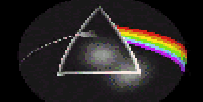



Computational Science is an ever growing discipline which permeates all sectors of the society. Its practitioners use computers, often pushing the machines and methods to their limits, to solve difficult problems that may pertain to any field of research. Researchers in Physics, Mathematics, Computer Science, Engineering, Economics and other disciplines develop methods of solution that often transcend their fields.
A major reason for the very fast development of Computational Science is the exponential increase in computer power. This allows to solve problems with an incredible level of realism and details. In some areas of science and engineering this sometimes allows reducing the cost of physical prototyping since the models are trustworthy. In Economics, the investment firms can rely further on financial models predictions allowing for better control of their investments. This is of course due in part to the desktop computer being as powerful as the supercomputer of yesterday, and to the current supercomputer of today being that much more powerful.
A second important factor responsible for the ever increasing importance of Computational Science is the development of very powerful and flexible software environment for problem solving. This textbook will use both Microsoft Excel, or OpenOffice, and Maple as archetypical numerical and algebraic problem solving tools. The emphasis will be to contrast the two approaches, numerical and algebraic, showing their complimentarily and the advantages and disadvantages of each in actual problem solving.
A final word of clarification. Computational Science is the science of using computers to solve a variety of difficult problems. Computer Science is the science of developing the software that makes the computers work, i.e., operating systems, compilers, ... Information Science deals mostly with information, organized in databases, i.e., indexed organized datasets. Computer Engineering deals with the developing new hardware platforms. This electronic textbook is meant to be an introduction to Computational Science.
|
Any questions or suggestions should be directed to |